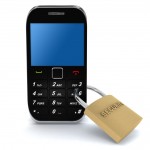Securing New Digital Devices

Laptops, desktops, Macs, mobiles, and tablets are on many people’s wish lists this holiday season. Once these shiny new devices are connected to the Internet, they will be under siege by malware created by criminals in order to steal identities.
According to a recent McAfee survey, 60% of consumers now own at least three digital devices, and 25% own at least five. Cybercriminals are taking advantage of these new opportunities by widening their nets to target a variety of devices and platforms.
McAfee Labs is reporting an increase in Mac and mobile malware, while PC threats also continue to escalate.
Mobiles: Mobile malware is on the rise, and Android is now the most targeted platform. Attacks aimed at the Android platform increased 76% from the first to second quarters of 2011. Malicious applications are a main threat area, so be careful of third party applications, and only download from a reputable app store. Read other users’ reviews and make sure you are aware of the access permissions being granted to each app.
Macs, iPads, and iPhones: Unfortunately, the popularity of Apple computers and devices has led to escalated threats. As of late 2010, there were 5,000 pieces of malware targeting the Mac platform, and they have been increasing at a rate of about 10% each month.
Since more threats are being aimed at this platform, consider installing security software for your Mac as a proactive measure. Check out Apple’s new iCloud service, which provides several tools for syncing, backing up, and securing data, and consider a product that offers remote locate, wipe, and restore features in case of loss.
Laptops and desktops: Your security software should include, at a minimum, antivirus software with cloud computing, a two-way firewall, anti-spyware, anti-phishing, and safe search capabilities. Additional levels of protection include anti-spam, parental controls, wireless network protection, and anti-theft protection to encrypt sensitive financial documents.
Gaming and entertainment devices: Remember that the Nintendo Wii and 3DS, PlayStation 3, and Xbox 360 are now Internet-connected, making them vulnerable to many of the same threats as PCs. To protect your investment, make reliable backup copies of your games. Take advantage of built-in parental controls that can help shield kids from violent games or limit when the device can be used.
Some multiplayer games allow kids to play with strangers over the Internet, so if you are a parent, consider employing monitoring tools. Connect your device to secure Wi-Fi networks only, and don’t store personal information on your device.
Removable storage devices: Flash drives and portable hard drives require technologies to protect your data. Consider using a secure, encrypted USB stick, which scrambles your information to make it unreadable if your device is lost or stolen. Install security software that protects portable hard drives, and set a password. Since removable storage devices are small and easily stolen, you should not leave them unattended.
Learn more tips from McAfee here: http://blogs.mcafee.com/consumer/securing-new-devices
Robert Siciliano is an Online Security Evangelist to McAfee. See him discussing identity theft on YouTube.(Disclosures)





